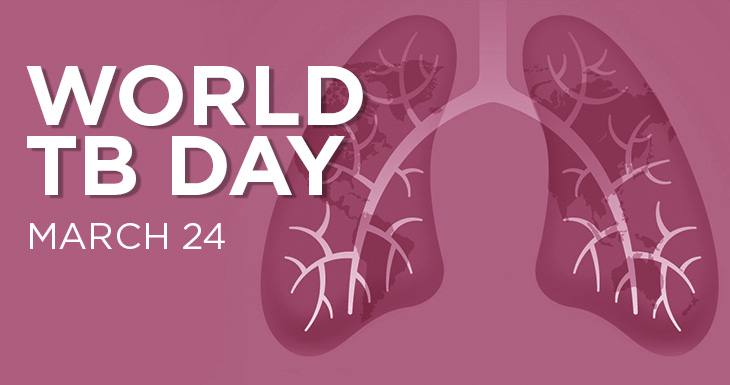World TB Day is celebrated on March 24 of each year to raise awareness of the dire social, economic and health consequences of tuberculosis (TB) and to accelerate efforts to end the global epidemic of this disease.
This date marks the day in 1882 when Dr. Robert Koch announced that he had discovered the bacterium that causes TB, making it possible to diagnose and cure the disease.
TB remains the most deadly infectious disease in the world. Every day more than 4,000 people die from TB and approximately 30,000 people contract this preventable and curable disease. Global efforts to fight TB are estimated to have saved 58 million lives since 2000.
Data and numbers
- Tuberculosis (TB) is one of the ten leading causes of death in the world.
- In 2018, 10 million people became ill with TB, of which 1.5 million died from the disease (including 251,000 people with HIV).
- TB is the leading cause of death for HIV-positive people.
- An estimated 1.1 million children became ill with TB in 2018, of which 251,000 died from the disease (including children with HIV-associated TB).
- Multidrug-resistant tuberculosis continues to pose a public health crisis and a threat to health security. The WHO estimates that there were 484,000 new cases with resistance to rifampicin (the most effective first-line drug), of which 78% with multi-drug resistant tuberculosis.
- The incidence of TB worldwide is reduced by approximately 2% a year. That number should increase to 4-5% in order to meet the goals of the End TB Strategy for 2020.
Basic facts about tuberculosis
Tuberculosis or TB is caused by a bacteria called Mycobacterium tuberculosis. These bacteria usually attack the lungs, but they can also attack other parts of the body, such as the kidneys, spine, and brain.
Not everyone infected with the TB bacteria gets sick. So there are two conditions related to tuberculosis: latent tuberculosis infection (LTBI) and tuberculosis disease. If not treated properly, tuberculosis disease can be fatal.
Tuberculosis bacteria are transmitted from one person to another through the air. These bacteria are released into the air when a person with tuberculosis of the lungs or throat coughs, sneezes, speaks, or sings. Nearby people can inhale these bacteria and become infected.
Tuberculosis is NOT transmitted by the following:
- Shake hands with someone.
- Sharing food or drinks.
- Touching bedding or toilets.
- Share the toothbrush.
- Kiss each other.
Tuberculosis vaccine (BCG)
Currently we only have the classic BCG vaccine, which takes its name from the modified bacteria that make it up: the Calmette and Guérin bacillus. It is a live vaccine, containing germs attenuated in the laboratory so that they do not cause harm, but an immune defense response.
WHO SHOULD BE VACCINATED?
In Western Europe, general (routine) vaccination of all children against tuberculosis is not recommended, but only in certain individual circumstances of high risk of contracting the disease.
Vaccination against tuberculosis, however, is routinely applied in countries of low socioeconomic status, where the disease is more frequent.
HOW IS THE VACCINE ADMINISTERED?
The BCG vaccine is injected intradermally, that is, just below the surface of the skin, in the shoulder area; so that, upon receipt, it is common to observe a lump like that of a mosquito bite at the point of inoculation.


